Incorporating Natural and Nature-Based Features in an Urban California Creek Through Application of Engineering With Nature® Principles
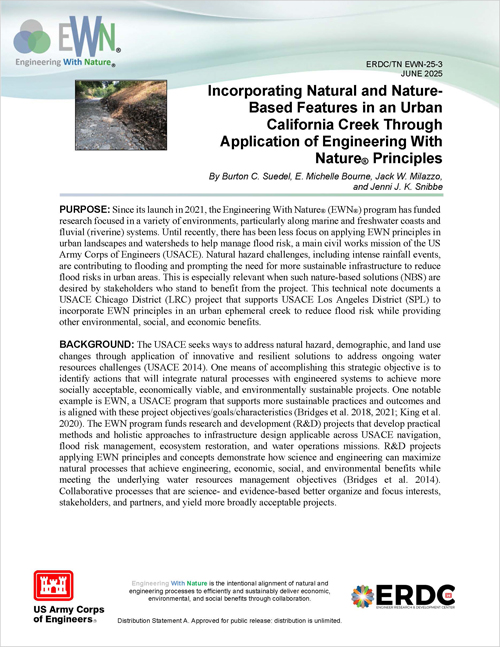
Since its launch in 2021, the Engineering With Nature® (EWN®) program has funded research focused in a variety of environments, particularly along marine and freshwater coasts and fluvial (riverine) systems. Until recently, there has been less focus on applying EWN principles in urban landscapes and watersheds to help manage flood risk, a main civil works […]
Engineering With Nature : integrating plant communities into engineering practices. a guidance manual, book 2

Applying native plant communities in environmental engineering practices can profoundly enhance the establishment and sustainment of natural ecosystems, which is imperative for the success of healthy habitats and the wildlife communities they support. The objective of this manual is to stimulate interest in applying native plants in a wide variety of settings, including inland, upland, […]
Ohio Creek urban coastal storm risk management project : an application of Engineering With Nature® principles in practice

The Engineering With Nature® (EWN®) program within the US Army Corps of Engineers (USACE) funds research projects occurring in a myriad of environments, including in marine coasts, freshwater coasts, and fluvial (riverine) systems. Yet there have been fewer projects documented where EWN principles have been applied in urban landscapes, particularly to manage flood risk, a […]
Scaling Nature-Based Solutions for Fluvial Floods: A Worldwide Systematic Review

Despite increased understanding and adoption of nature-based solutions (NBSs) within urban and coastal areas, large-scale NBS for fluvial flood mitigation remain challenging to study and implement. A stronger evidence base is needed to identify critical research gaps and to best inform the design and deployment of NBS on the watershed scale. We synthesize evidence of […]
Beneficial Use of Dredged Material for Submerged Aquatic Vegetation Habitats: Overcoming Challenges and Seeking New Opportunities
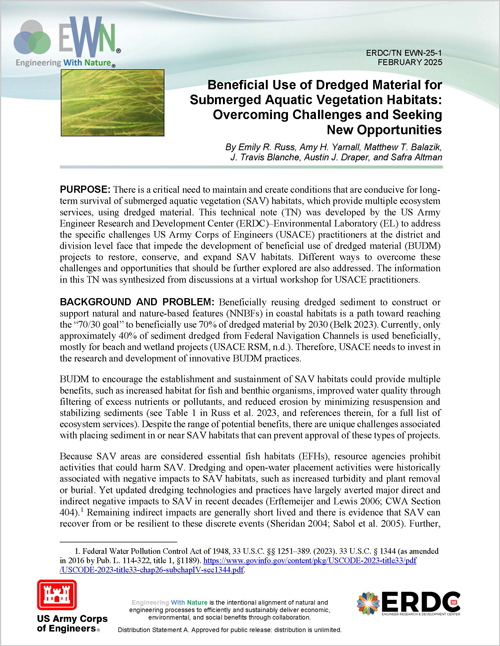
There is a critical need to maintain and create conditions that are conducive for longterm survival of submerged aquatic vegetation (SAV) habitats, which provide multiple ecosystem services, using dredged material. This technical note (TN) was developed by the US Army Engineer Research and Development Center (ERDC)–Environmental Laboratory (EL) to address the specific challenges US Army […]
Modeling the impacts of sand placement strategies on barrier island evolution in a semi-enclosed bay system
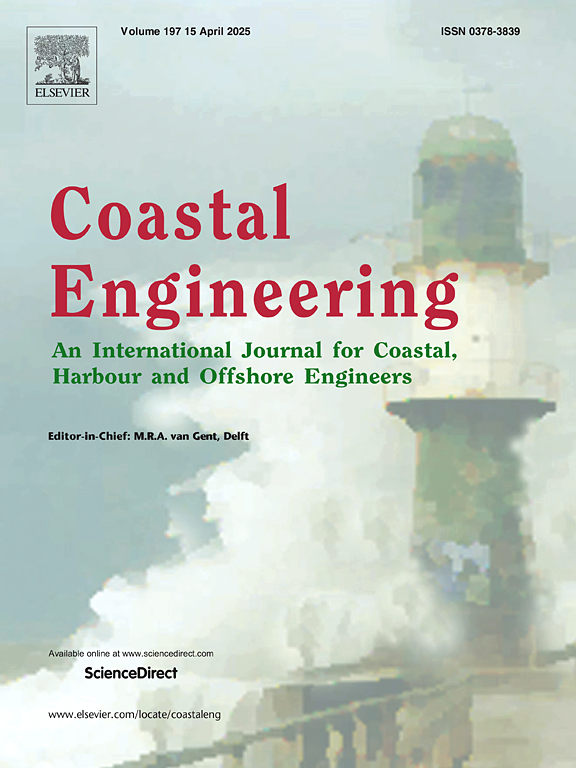
This study assesses the impacts of five proposed restoration actions at Little Dauphin Island, a low-lying relic spit in a semi-enclosed bay system on the Alabama coast. A Delft3D model is developed to simulate annual scale (five-year) sediment transport and resulting bed level changes. The model is validated with observed water level and wave data, […]
Engineering With Nature: natural infrastructure for mission readiness at U.S. Navy and Marine Corps installations
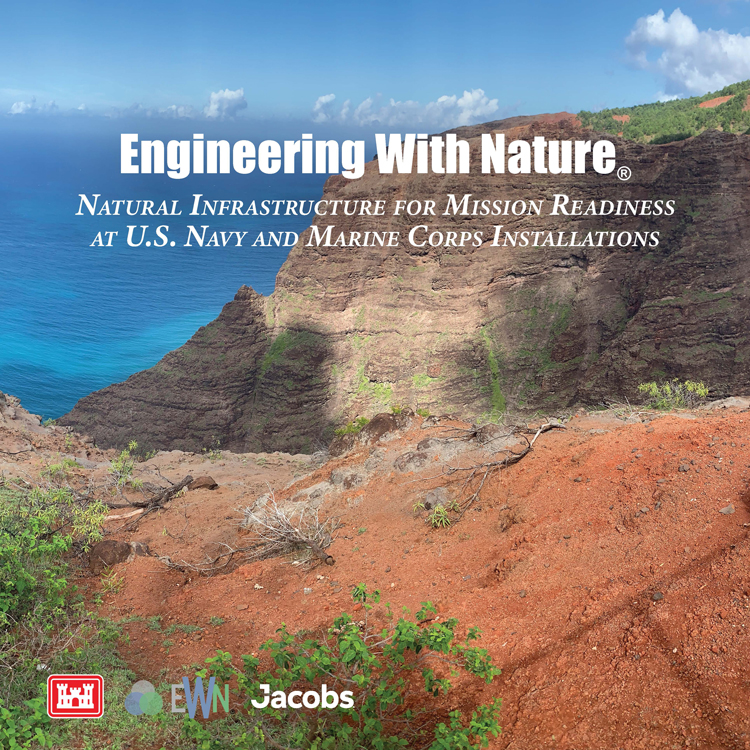
This book illustrates some of the current challenges and hazards experienced by military installations, and the content highlights activities at eight U.S. Navy and Marine Corps military installations to achieve increased resilience through natural infrastructure.
Strategic planting and nutrient amendments to accelerate the revegetation of rapidly retreating coastal dunes

Potential Engineering With Nature® Features to be Incorporated at Woodtick Peninsula
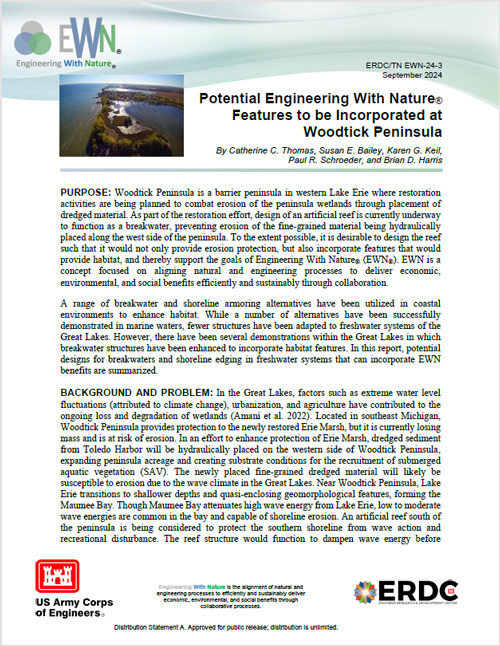
Woodtick Peninsula is a barrier peninsula in western Lake Erie where restoration activities are being planned to combat erosion of the peninsula wetlands through placement of dredged material. As part of the restoration effort, design of an artificial reef is currently underway to function as a breakwater, preventing erosion of the fine-grained material being hydraulically […]
Evaluating permanganate oxidizable carbon (POXC)’s potential for differentiating carbon pools in wetland soils

“This research quantified POXC in six diverse wetland soils that differed greatly in organic matter content and spanned both freshwater and saltwater habitats, then evaluated the relationship between POXC and basic soil C properties, microbial indicators, and physical and chemical fractionation metrics. Results showed POXC averaged ~37 times greater in wetlands than upland agricultural soils, […]

